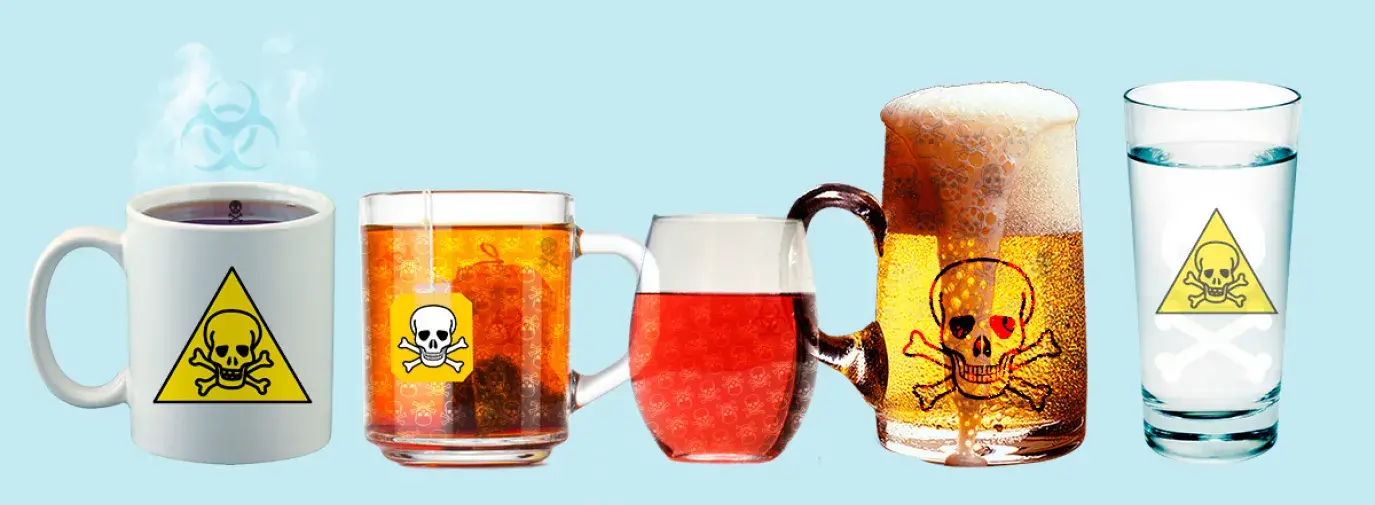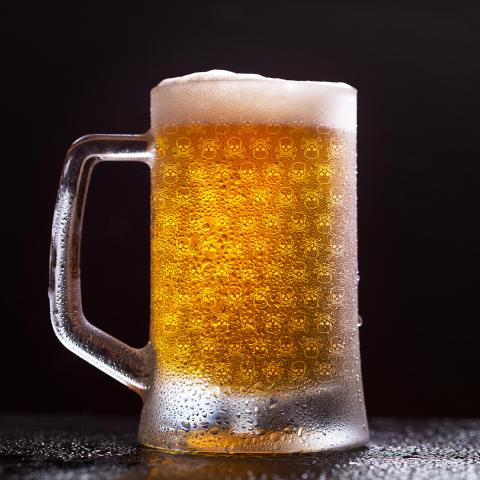
In our everyday lives, we are surrounded by pesticides and other harmful chemicals, including those found on our food, clothes, yards, water, and even in the air. Consumers are demanding ever more pesticide and chemical-free options; hence, the rise in the organic label since its introduction in 1990.
Have you ever stopped and wondered what’s in your drink? Which pesticides could be lurking in your morning cup of coffee or your evening glass of wine?
As it happens, our favorite drinks are steeped in synthetic fertilizers, pesticides, herbicides, fungicides, and insecticides. These chemicals are harmful to the farmworkers who harvest the crops that make these beverages, to the environment, to the people who live near the farms, and to you, the consumer.
While there aren’t many alternatives, there are a few options on the markets for consumers who want healthier, safer options.
Learn about the pesticides found in three of the US’s top consumed beverages: coffee (#1), beer (#5), and wine (#7).
Coffee #1
For many people, the day starts with a cup of coffee. And research finds that drinking moderate amounts of coffee daily is good for you, helping to prevent several forms of cancer.
However, those health benefits could be undermined by the chemicals lurking in your cup of joe.
Conventional coffee is among the most heavily chemically treated foods in the world. Its popularity means farmers will do everything to protect and increase crop yields, leading to massive amounts of chemical inputs, many of which make it all the way to your cup.
One of the most common pesticides used on coffee (and many crops) is glyphosate, more commonly known as Roundup. There is a growing body of evidence that glyphosate is a carcinogen and causes other human health concerns.
Furthermore, the US has no Maximum Residual Limits on pesticides on coffee—it’s completely unregulated! Brazil—the #1 grower and exporter of coffee beans—has very lax pesticide regulations, putting the majority of US coffee drinkers at risk.
What you can do
Buy certified organic coffees like Equal Exchange, or from other Green Business Network members! If you’re a decaf drinker, as a bonus, Equal Exchange’s decaf process is chemical-free!
Beer #5

Evidence of the earliest beer dates back to the 5th millennium BC in Iran. As one of the oldest drinks in the world, versions of which sprung up in nearly every civilization, is it any wonder that the very first food regulation in the world was about beer and it’s still in place? The German Beer Purity Law was established in 1516, regulating that beer could only contain water, barley, hops, and yeast after 1857.
The US is the #1 hops exporter and #7 barley exporter in the world.
Barley is known to have up to 7 pesticides on it, including the neurotoxins chlorpyrifos and dichlorvos (DDVP).
Hopefully chlorpyrifos will be less of an issue in both domestic and imported beer after the EPA ruling banning it on food crops beginning in February 2022.
In addition to pesticides, hops are often chemically dried, as they rot quickly after harvest if they’re not dried properly.
Hops have been known to have bifenazate, which is toxic to bees and other pollinators; as well as boscalid, a probable carcinogen, amongst many others.
What you can do
Unfortunately, there are few organic beer options, and the only mainstream option available is Michelob Ultra Pure Gold.
Ask your local market or liquor store to stock organic beers if they don’t already.
You could check out your local breweries, too – some are organic or use inputs with less pesticides.
Are you or any of your friends homebrewers? You could consider growing barley in your backyard—it’s a fabulous cover-crop.
If you live in the hop belt, you could try your hand at growing a hop plant or two (it’s a perennial!), but remember: they grow really tall. You can easily buy organic hop seeds and rhizomes online.
Wine #7

Wine dates back thousands of years and millions of people still enjoy it today. The grapes that go into wines are often doused with multiple chemicals.
The Pesticide Action Network found 56 pesticides on grapes, including neurotoxins, carcinogens, hormone disruptors, pollinator toxins, and reproductive toxins.
It is true that some of the pesticide residue is reduced during fermentation, it depends on the pesticide: some do not survive the wine-making process, while others are just as present as they were during application.
Moreover, while grapes are the main ingredient in wine, many wines have flavor modifiers added to them, like sugar, acids, and chemicals.
Even wine that is certified organic is allowed to have 70 added chemicals in it, while conventional wine can have hundreds.
However, the chemicals added to organic wine cannot have a harmful effect on human or environmental health as defined by the US Food and Drug Administration.
What you can do
Look for organic wines, which are, fortunately, much easier to find than organic beer.
Though winemakers are not required to list all ingredients on their bottles, an organic label means that all inputs are organic. It also means that American wines do not contain sulfites—a common preservative in wine that gives many people headaches—while their European counterparts may still contain them.
Note: if it is labeled specifically as “organic grapes”, then the other additives may not be organic.
Winemakers like Frey Vineyards make it easy to purchase organic wine online ($9-$50/bottle).
Or check out this handy list from Food & Wine magazine ($14-$26/bottle).
Of course, whether your alcoholic beverage is organic, the alcohol itself carries health risks. Remember to drink alcohol responsibly.
greenamerica.org

